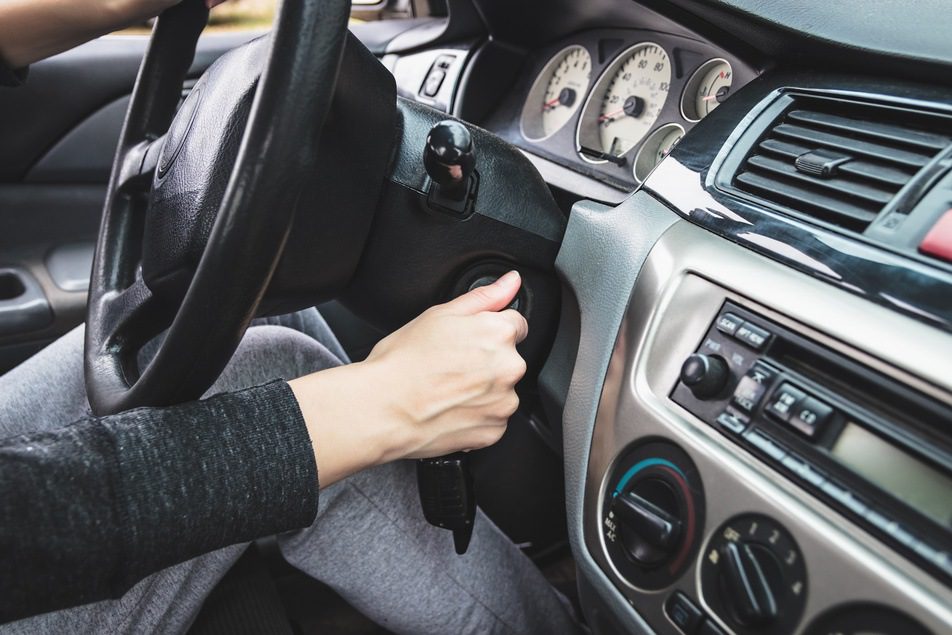It’s a scenario we all dread: you’re running late for work, you hop into your car, turn the key, and… nothing happens. A car that won’t start can quickly turn a normal day into a stressful ordeal. Whether you’re dealing with a dead battery, fuel system issues, or something more complex, this guide will walk you through the steps to diagnose and potentially solve the problem. We’ll cover everything from common causes to DIY solutions and when to seek professional help.
Understanding the Common Causes
Before we dive into troubleshooting, let’s explore the most frequent reasons why your car might not start:
- Dead or weak battery: Often the primary culprit, especially in cold weather.
- Faulty starter motor: Can prevent the engine from turning over.
- Fuel system problems: Issues with fuel delivery can keep the engine from starting.
- Ignition system issues: Problems with spark plugs or the ignition switch can cause starting failures.
- Electrical system faults: Corroded connections or blown fuses can interrupt the starting process.
Understanding these common causes will help you approach the problem systematically and increase your chances of getting back on the road quickly.

Step-by-Step Troubleshooting Process
When your car refuses to start, follow this comprehensive troubleshooting process:
1. Check the Battery
A dead or weak battery is the most common reason for starting issues. Here’s what to do:
- Turn on the headlights: If they’re dim or don’t work at all, your battery is likely the culprit.
- Inspect the battery terminals: Look for corrosion (a white, powdery substance) or loose connections.
- Try jump-starting: If possible, use jumper cables and another vehicle to jump-start your car.
2. Listen for Sounds
The noises (or lack thereof) when you turn the key can provide valuable clues:
- Clicking sound: Often indicates a dead battery or faulty starter motor.
- Engine cranks but doesn’t start: This could point to fuel system or ignition problems.
- No sound at all: Might suggest an electrical issue or a completely dead battery.
3. Check the Fuel System
Ensure you have enough fuel in the tank. If the fuel gauge is malfunctioning:
- Add a couple of gallons to rule out an empty tank.
- Listen for the fuel pump when you turn the key to the “On” position (before cranking).
4. Examine the Ignition System
For cars with key fobs:
- Try holding the fob very close to the start button when pressing it.
- The key fob battery may be dead. Use the spare key or replace the fob battery.
For cars with traditional keys:
- If the key won’t turn, the steering wheel may be locked. Gently turn the wheel while turning the key to unlock it.
5. Inspect Fuses and Connections
Check for blown fuses related to the ignition system:
- Consult your car’s manual to locate the fuse box and identify the relevant fuses.
- Look for any loose or corroded electrical connections.
Specific Issues and Their Solutions

Now that we’ve covered the general troubleshooting process, let’s dive deeper into specific issues and their solutions:
Dead or Weak Battery
Signs:
- Dim or non-functioning headlights and interior lights
- Clicking sound when turning the key
- No electrical response when attempting to start
Solution:
- Try jump-starting the car using jumper cables and another vehicle.
- If successful, drive the car for at least 15 minutes to recharge the battery.
- Have the battery tested at an auto parts store to determine if it needs replacement.
Faulty Starter Motor
Signs:
- Clicking noise when turning the key
- Engine doesn’t crank despite a good battery
Solution:
- Tap the starter motor gently with a solid object while someone tries to start the car.
- If this works, it’s a temporary fix. Have the starter motor replaced as soon as possible.
Fuel System Problems
Signs:
- Engine cranks but doesn’t start
- Car starts briefly but dies immediately
Solution:
- Check the fuel gauge and add fuel if necessary.
- Listen for the fuel pump when you turn the key to “On” position (before cranking).
- If you don’t hear it, the fuel pump may be faulty and require replacement.
Ignition System Issues
Signs:
- Engine cranks but doesn’t start
- Intermittent starting problems
Solution:
- Check for loose spark plug wires.
- Inspect the distributor cap for cracks or corrosion (if applicable).
- Consider replacing spark plugs if they’re old or fouled.
When to Call for Professional Help
While many starting issues can be diagnosed and sometimes fixed on your own, certain situations require professional assistance:
- If you’ve tried jump-starting and basic troubleshooting without success
- When dealing with hybrid or electric vehicles
- If you smell fuel or see smoke
- When you’re unsure about performing any diagnostic steps or repairs
Remember, safety should always be your top priority. If you’re uncomfortable with any aspect of troubleshooting or repair, it’s best to call a professional mechanic.
Also read: eLoanWarehouse
Preventive Maintenance: The Key to Reliable Starts
To avoid future starting problems, consider these preventive measures:
- Regular battery checks: Have your battery tested annually, especially before extreme weather seasons.
- Keep it clean: Regularly clean battery terminals and cables to prevent corrosion.
- Timely replacements: Replace spark plugs, fuel filters, and other components according to your vehicle’s maintenance schedule.
- Address warning signs: Don’t ignore check engine lights or unusual noises.
- Fuel management: Try to keep your gas tank at least a quarter full to prevent fuel pump issues.
- Regular oil changes: Maintain proper oil levels and change oil as recommended to keep your engine in good condition.
- Alternator maintenance: Have your alternator checked during routine maintenance to ensure it’s charging the battery properly.
Frequently Asked Questions
To further assist you, we’ve compiled answers to some frequently asked questions about car starting issues: Q: How often should I replace my car battery?
A: On average, car batteries last 3-5 years. However, this can vary depending on usage, climate, and maintenance. Have your battery tested annually after the 3-year mark. Q: Can extreme weather affect my car’s ability to start?
A: Yes, both hot and cold weather can impact your car’s starting ability. Extreme cold can reduce battery capacity, while extreme heat can accelerate battery wear and fluid evaporation. Q: Is it safe to jump-start a car with a hybrid battery?
A: It’s generally safe to jump-start a hybrid car’s 12V battery, but consult your owner’s manual first. Never attempt to jump-start the high-voltage hybrid system. Q: What should I do if my car won’t start and I’m in a remote area?
A: If possible, call for roadside assistance. If you’re in a safe location, attempt basic troubleshooting. Always prioritize your personal safety over fixing the car. Q: Can a bad alternator cause starting problems?
A: Yes, a faulty alternator can fail to charge the battery properly, leading to starting issues. If your car starts but dies shortly after, or if the battery light on your dashboard is illuminated, the alternator might be the culprit.
Conclusion: Stay Prepared and Proactive
Dealing with a car that won’t start can be stressful, but understanding the common causes and knowing how to troubleshoot can save you time, money, and frustration. Remember these key points:
- A dead battery is the most common cause of starting issues.
- Listen for sounds when attempting to start – they provide valuable diagnostic clues.
- Basic troubleshooting can often resolve the problem, but don’t hesitate to seek professional help when needed.
- Regular maintenance is crucial for preventing starting problems.
By following the steps outlined in this guide, you’ll be better equipped to handle starting issues when they arise. However, always prioritize safety and don’t attempt repairs you’re not comfortable with. With proper care and attention, you can minimize the chances of being stranded with a car that won’t start. Remember, prevention is key. Regular maintenance checks and addressing small issues promptly can help ensure your car starts reliably when you need it most. Stay prepared by keeping jumper cables, a basic tool kit, and emergency contact numbers in your vehicle at all times. With these precautions and the knowledge from this guide, you’ll be well-prepared to handle most starting issues that come your way. By staying proactive about your car’s maintenance and arming yourself with this knowledge, you can significantly reduce the likelihood of experiencing starting problems and ensure a smoother, more reliable driving experience.



